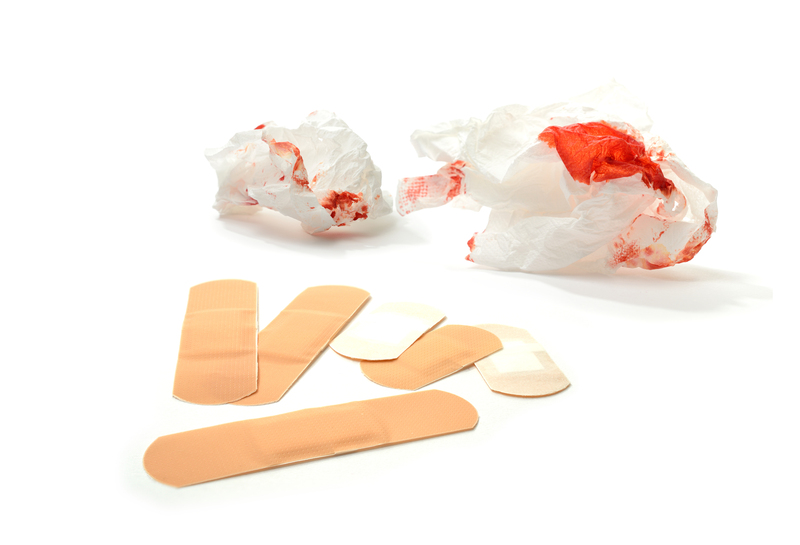Discover the best ways to clean mould from your window sills
Posted on 02/07/2025
Discover the Best Ways to Clean Mould from Your Window Sills
Are you struggling with stubborn mould hiding on your window sills? Not only is mould unsightly, but it can also cause unpleasant odours, structural damage, and even health issues for those exposed to it over time. Thankfully, there are effective strategies to clean mould from window sills and prevent its return. In this in-depth guide, we'll explore multiple methods for removing mould from window sills, prevention tips, expert advice, and natural alternatives to chemical cleaners. Let's dive in and reclaim your fresh, healthy home!

Understanding Mould on Window Sills: Causes and Risks
Why Does Mould Grow on Window Sills?
Window sills are prime real estate for mould growth due to condensation and poor ventilation. When moist indoor air contacts the cooler surface of a window, water droplets form and settle on the sill. Combined with dust or organic debris, this creates a perfect foundation for various types of mould, including black mould (Stachybotrys chartarum).
- Lack of ventilation: Poor airflow traps moisture inside.
- High humidity: Bathrooms, kitchens, or laundry rooms are especially prone to excess moisture.
- Faulty window seals: Leaks allow water infiltration.
- Inadequate cleaning: Dirt and dust feed mould spores.
Health and Structural Risks of Window Sill Mould
It's important to tackle mould immediately due to its potential hazards. Exposure to mould can trigger allergic reactions like sneezing, coughing, headaches, skin rashes, and, in serious cases, respiratory infections--especially for children, elderly, and people with weakened immune systems. Prolonged moisture and mould exposure may also weaken window frames, damage paint, and lead to costly repairs.
Essential Safety Precautions Before Cleaning Mould
- Wear protective gear: Always use gloves, a mask (preferably an N95 respirator), and safety goggles to avoid contact with mould spores.
- Ensure good ventilation: Open windows and doors or run an exhaust fan to keep air moving while cleaning.
- Avoid mixing chemicals: Combining bleach with ammonia or certain cleaners can generate toxic fumes.
- Keep pets and children away: Ensure they do not enter the room until cleaning is complete and surfaces are dry.
Top Ways to Clean Mould from Window Sills
1. Use White Vinegar for Mould Removal
White vinegar is a natural, non-toxic solution for cleaning mould from window sills. Its mild acidity breaks down most types of mould and inhibits regrowth.
- Step 1: Fill a spray bottle with undiluted white vinegar.
- Step 2: Liberally spray the affected area and let it sit for at least 60 minutes.
- Step 3: Wipe the mould away with a clean cloth or scrubbrush.
- Step 4: Rinse the area with warm water and dry thoroughly.
- Step 5: Repeat weekly for preventative maintenance.
Tip: Vinegar works best on light to moderate mould growth. For tougher stains, pair with baking soda for extra scrubbing power.
2. Attack Stubborn Mould with Baking Soda Paste
Baking soda is a gentle abrasive and deodorizer. When vinegar alone isn't enough, a paste can remove persistent black mould on window sills.
- Step 1: Mix two to three tablespoons of baking soda with a few drops of water to create a thick paste.
- Step 2: Apply the paste generously to the mouldy spots.
- Step 3: Scrub using a soft brush or old toothbrush.
- Step 4: Wipe away residue with a damp cloth.
- Step 5: Finish by spraying with vinegar and drying the sill.
This double-method not only cleans mould from window ledges but also leaves the surface smelling fresh and clean.
3. Hydrogen Peroxide: Powerful Mould Killer
Hydrogen peroxide (3%) is a potent fungicide that kills most indoor mould species on hard, non-porous window sills.
- Step 1: Pour hydrogen peroxide into a spray bottle (do not dilute).
- Step 2: Spray the mouldy silicone or paint and let it bubble for 10-15 minutes.
- Step 3: Scrub gently to remove the mould stains.
- Step 4: Wipe clean with a damp cloth and dry thoroughly.
Hydrogen peroxide is safer than bleach but can still discolor some surfaces. Always test in a hidden corner first!
4. Bleach: Strong Defence Against Severe Mould
For severe or persistent mould infestations, bleach is an effective way to clean mould from window frames and sills made of glass, plastic, or painted wood. However, bleach is caustic and should be used with caution.
- Step 1: Mix one part bleach with three parts water in a bucket.
- Step 2: Use a sponge or cloth to apply to the mouldy area (do NOT spray, as this can spread spores).
- Step 3: Let sit for 10-15 minutes.
- Step 4: Scrub if needed and rinse thoroughly with plain water.
- Step 5: Dry the window sill completely.
Important: Never mix bleach with vinegar or ammonia--dangerous gases can result! Also, avoid using bleach on unsealed wood as it can cause damage.
5. Commercial Mould Cleaners
There are various commercial sprays and foams labelled specifically for mould and mildew removal. These products often combine fungicides and detergents for fast-acting results.
- Read the label: Make sure it's safe for your window sill material (metal, vinyl, wood, etc.).
- Follow instructions: Apply as directed, ventilate the area, and avoid residue.
Many professional mould removal specialists recommend using approved, commercial mould cleaners for severe or recurring outbreaks.
Natural Alternatives for Mould Removal
If you prefer green cleaning methods for window sill mould, try the following:
- Tea tree oil dilute spray - Mix one teaspoon of pure tea tree oil with one cup of water. Spray on mould, leave for an hour, then wipe.
- Clove oil solution - Mix 1/4 teaspoon of clove oil in one litre of water. Lightly spray, let dry then brush off the mould.
- Lemon juice - The acidity of lemon juice can also help break down light mould and leave a fresh scent.
Step-by-Step: How to Clean Mould from Window Sills
The Complete Cleaning Process
- Put on safety gear (gloves, mask, goggles).
- Remove dust and debris: Use a vacuum or soft brush to sweep the windowsill, minimizing airborne spores.
- Choose your cleaning solution based on the type and severity of the mould (vinegar, baking soda, hydrogen peroxide, bleach, or commercial product).
- Apply the solution liberally to thoroughly soak the mould patches.
- Allow the solution to sit for at least 10-60 minutes.
- Scrub if needed with a non-scratch brush or old toothbrush.
- Wipe away residue with a clean, damp cloth.
- Rinse and dry the area completely. Mould loves moisture, so a dry sill is essential!
- Safely dispose of rags and cleaning tools by placing them in a sealed trash bag.
Best Practices: Preventing Mould Growth on Window Sills
Cleaning is just the first step. To stop mould from returning to your window sills, implement these proactive prevention measures:
- Improve ventilation: Open windows daily, use dehumidifiers, or install extractor fans, particularly in moisture-prone rooms.
- Wipe condensation as soon as possible: Keep a small towel near your windows so you can dry sills each morning in winter.
- Seal leaky windows: Caulk or repair window frames to prevent water infiltration.
- Clean sills regularly: Dust and clean with vinegar every few weeks to maintain a mould-free environment.
- Keep plants away: Potted plants near windows contribute to moisture; maintain airflow and monitor for hidden mould.
When Should You Call a Professional?
If the mould growth is widespread (over 1 square metre), returns repeatedly despite cleaning, or releases a strong musty smell, contact a mould remediation specialist. Hidden water leaks or mould inside your wall cavities often require expert intervention.

Frequently Asked Questions When Cleaning Mould from Window Frames and Sills
What causes mould to keep returning even after cleaning?
If you find that mould keeps appearing on your window sills, the root cause is usually excess moisture. Look for ongoing leaks, condensation, or humidity problems. Regular cleanings paired with ventilation and sealing solutions will help.
Is it safe to use bleach to clean mould from wooden window sills?
Bleach should not be used on unsealed wood as it can damage or discolor the material. Try white vinegar, baking soda, or a mould remover suitable for wood instead.
How often should I check for mould on my window sills?
Especially in damp climates, check your window sills weekly for signs of mould, particularly after rain or in the cooler months. Early intervention is key.
Can window sill mould cause allergies or illness?
Yes--mould spores can cause allergies, respiratory irritation, or worsen asthma symptoms. Address any mould growth promptly and improve ventilation in your home.
Conclusion: Keeping Your Home Mould-Free
The best ways to clean mould from your window sills involve a combination of effective cleaning agents, safety precautions, and ongoing maintenance. Whether you choose eco-friendly solutions like vinegar and baking soda, commercial mould removers, or professional help, early and thorough action is essential. By following the advice in this guide, you'll enjoy cleaner, healthier window sills--and a safer home for everyone inside!
For more helpful cleaning tips or guidance on tackling stubborn household mould, explore our related articles or contact local mould remediation experts for tailored support.





